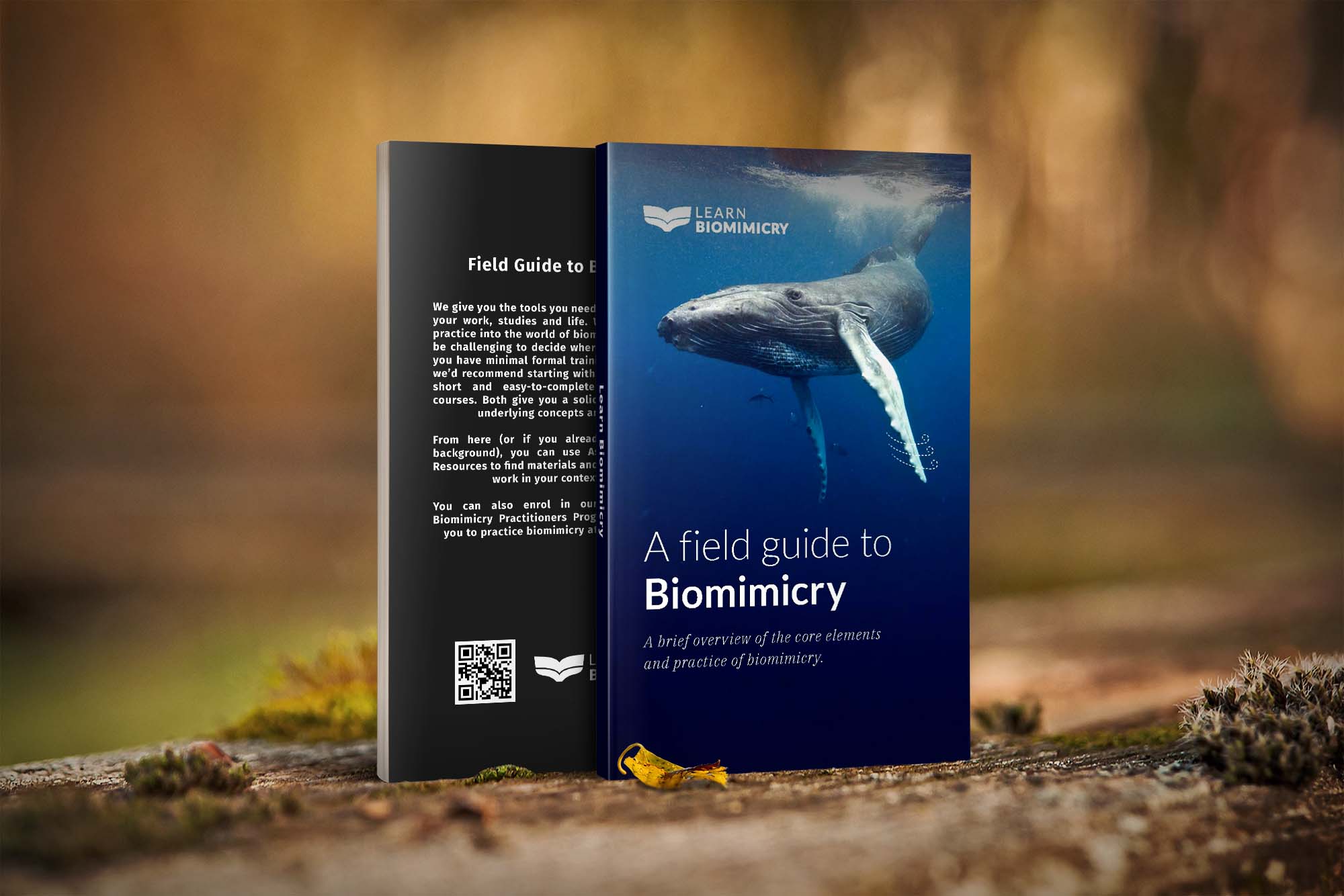The Best Biomimicry Examples for Urban Design

In this article, we list some of the best biomimicry examples for urban design. Urbanisation is rapidly reshaping our landscapes across the world, and there is a strong need for sustainable, low-impact solutions like green architecture and nature-inspired designs.
By applying biomimicry, and studying how natural systems thrive and adapt, urban designers, architects and city planners can plan resilient cities and communities that create conditions conducive to life.
Interested in designing for the built environment? Read: What (really) is Biophilic Design?
1. How a Forest Inspired the Village of Lavasa, India


World-renowned biomimic Janine Benyus and her team worked on this project - which is still being completed - to create a life-friendly village in India. They looked to the deciduous forest in the area and replicated six “ecosystem services” they could identify, in their urban design. This includes roofs that release monsoonal water as vapour, permeable pavement for groundwater absorption, and foundations that anchor like tree roots. Roads are modeled after local anthills, whose winding structure helps slow and channel heavy rainfall.
🪲 Inspired by: A forest
📍 Where: India
🤓 Who: HOK and Biomimicry 3.8
🎯 Biomimicry in Urban Design Example: Village of Lavasa
2. How Nature’s Ecosystems Inspired Zero-Waste Urban Cycles
The Mobius Project, designed by Exploration Architecture, is a concept inspired by natural ecosystems, where one organism's waste serves as the input for another, creating a continuous, zero-waste nutrient cycle. It typically includes building greenhouses in cities and focuses on three key processes: food production, energy generation, and water treatment.
🪲 Inspired by: Natural Ecosystems
📍 Where: UK
🤓 Who: Yaniv Peer, Exploration Architecture (now Iguana Architects)
🎯 Biomimicry in Urban Planning Example: The Mobius Project concept
3. How a Floodplain Inspired a Residential Development


A floodplain on the banks of the Saigon river near Ho Chi Minh City in Vietnam will be developed into a residential area. The development incorporated, instead of eradicated, the area’s natural wetlands and the river delta to maintain a locally-attuned system. This means that no part of the existing ecosystem will be destroyed or removed, rather, all development will happen in response to the local systems to build the Hamlet Waterfront.
🪲 Inspired by: The Local Ecosystem
📍 Where: Vietnam
🤓 Who: B+ H Architecture & Biomimicry Frontiers
🎯 Biomimicry in Sustainable Urban Design: The Hamlet Waterfront Residential Development
4. How Bones Inspired Building Materials


The production of concrete contributes to approximately 10% of global carbon emissions, largely due to the extremely high temperatures required to manufacture cement. So, bioengineer Michelle Oyen came up with an alternative: Bones. They’re strong, resistant and lightweight, and Michelle’s synthetic, bone-like materials are produced at room temperature. She has already created samples from minerals and gelatin, and is working on creating a low-carbon synthetic protein or polymer that can be used instead of natural collagen.
🪲 Inspired by: Human & animal bones
📍 Where: UK
🤓 Who: Michelle Oyen
🎯 Biomimicry in Urban Planning Example: Low-impact building materials
5. How Mangroves Inspired a Flood Defense Mechanism


Mangrove deforestation on the island of St. Kitts led to regular flash floods in some areas and significant desertification in others. Architect Davina Cranstoun, who grew up there, has developed a bio-inspired wave dissipation and flood defense design called Trinity D20, which mimics mangroves, while completing her Biomimicry Practitioner Programme with Learn Biomimicry.
🪲 Inspired by: Mangroves
📍 Where: St. Kitts, Caribbean
🤓Who: Davina Cranstoun
🎯 Biomimicry in Bio-Inspired Design Example: Flood Defense Mechanism
Read more about her project here.
Are you interested in seeing more biomimicry examples? Watch "The Top 10 Biomimicry Examples of All Time" on Youtube.
In Closing
Biomimicry offers urban planners and sustainable designers nature-inspired solutions to modern challenges like water management, energy efficiency, and biodiversity loss. By learning from ecosystems, cities can become more resilient, resource-efficient, and harmonious with nature, fostering environments that benefit both people and the planet. Nature's blueprint holds the key to smarter urban design.
If you're interested in more, read about the Top 10 Examples of Biomimicry in Architecture, or explore the article: What is Life-Centered Design?
Wild regards,
The Learn Biomimicry team
PS: Here are three ways we can help you learn biomimicry
1.) Download our FREE eBook: A Field Guide to Biomimicry
2.) Biomimicry Short Courses - Through these courses, you'll get practical knowledge of how to apply Biomimicry to your own design, get a learn biomimicry certificate which is recognised globally (and endorsed by the Biomimicry Institute), and so much more. Check out our biomimicry courses here today.
Our eBooks and courses can be applied to any context, from leadership lessons to product design. Our learners include architects, business founders, designers, teachers and sustainability consultants.
3.) If you have a project or idea and are looking to build it with Biomimicry in mind, join our 6-month Biomimicry Practitioner Programme to get hands-on with Nature.




